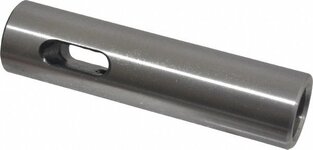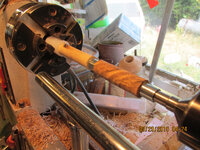TurtleTom
Member
I seem to spend an inordinate amount of time taking the chuck off, cleaning the taper inside the headstock and putting the mandrel back in. If I used a straight #2MT adapter I could just leave the chuck on all the time. It's like $24 but has anyone else tried this.
I don't suppose it will be too much bother to slide the live center up to zero the thing while I tighten the chuck. What I really need is 2 lathes but that will be awhile.
I don't suppose it will be too much bother to slide the live center up to zero the thing while I tighten the chuck. What I really need is 2 lathes but that will be awhile.
Attachments
Last edited:


